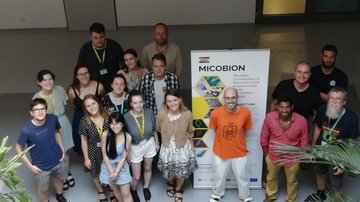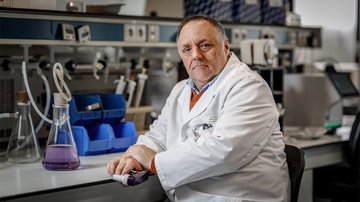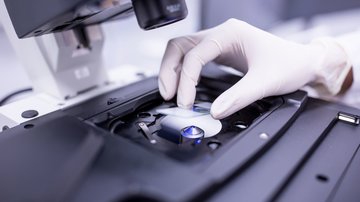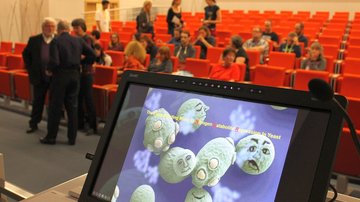
MiCoBion
Detecting Counterfeit Bee Honey Will Now Be Easier
Bee honey is one of the most faked foods in the world. It is most commonly supplemented with sugar cane syrups, corn, and rice. Detecting counterfeit honey is not easy and usually requires multiple methodological approaches. A new method has been developed in the BIOCEV Centre by researchers from the Faculty of Science, Charles University, and the Crop Research Institute.
The method is based on identifying different types of proteins in honey and recognizing those that are intrinsic to bee honey from those that may be artificially added to honey. Although these substances are commonly used in the food industry, they are not freely available to bees in nature. Similar frauds are completely unrecognisable to consumers and have not been proven even by existing methods.
"By applying targeted and untargeted proteomics methods, we have developed protocols to identify modified honeys. Thanks to our collaboration with the Crop Research Institute, a method has been developed that can contribute to increasing the quality of honey on the market. Our laboratory at the BIOCEV Centre primarily researchers the application of mass spectrometry in combination with liquid chromatography in the study of proteins – Proteomics," says Karel Harant, Head of the Proteomics Core Facility at the BIOCEV Centre, and adds: "Our services are also used by the Czech and European research community. We are happy that our laboratory could be involved in a project that will help detect fake honey, but also serve as an educational tool for people working in various fields and, last but not least, it will protect honest beekeepers."
Karel Harant and Pavel Talacko, co-investigators of the project from the Proteomics Service Laboratory at the BIOCEV Centre


Honey is the product of a highly organised honeybee community that produces it from collected natural resources, especially nectar and honeydew. Bees add their own secretions to honey during its production; these include proteins that are unique to each honey (the proteome). In addition, the unique properties of bee proteins may influence the different degrees of medicinal effects of different honey samples, etc.
One of the more important proteins supplied by bees to honey is bee-amylase. A sufficient amount of amylase activity is an internationally recognised factor that indicates the high quality and freshness of honey. If honey is counterfeit or handled carelessly, it also adversely affects its amylase activity. Honey with insufficient amylase activity must not be sold. For this reason, fraudsters compensate for this lack of amylase activity by adding foreign amylases that are not intrinsic to honey. Previous research conducted by the team that developed the methodology has shown that amylases commonly used in the food industry, such as those from the fungus Aspergillus niger or the bacteria Bacillus amyloliquefactiens and Bacillus licheniformis, are used for this purpose.
The certified “Methodology for the Identification of Foreign Amylases in Honey”, designed by researchers from the Faculty of Science, Charles University, and the Crop Research Institute, is based on a complete analysis of proteins contained in honey and provides a procedure to identify foreign amylases in honey.

The methodology is intended for use by state administration bodies, especially the Czech Agricultural and Food Inspection Authority and the State Veterinary Administration, which are concerned with honey quality control in the Czech Republic. The methodology is also used in the teaching and future practice of natural sciences, veterinary, chemical and medical branches. The results that can be obtained by applying the methodology in practice will also benefit honest beekeepers and traders.
The full text of the methodology can be found at www.vurv.cz
The European Commission is also intensely involved in the issues of fake honey. In the first half of 2022, the Commission expects to present a proposal for amended labelling of bee honey that will make it more obvious to consumers where the honey comes from. The largest producer of honey in the world today is China.
The certified methodology is the result of a project implemented by the National Agency for Agricultural Research, project No. QK1820088 (2018-2020). Its researchers were Mgr. Karel Harant for the Faculty of Science, Charles University, and RNDr. Tomáš Erban Ph.D. on behalf of the Crop Research Institute.
Source: VÚRV, v. v. i. / BIOCEV









































